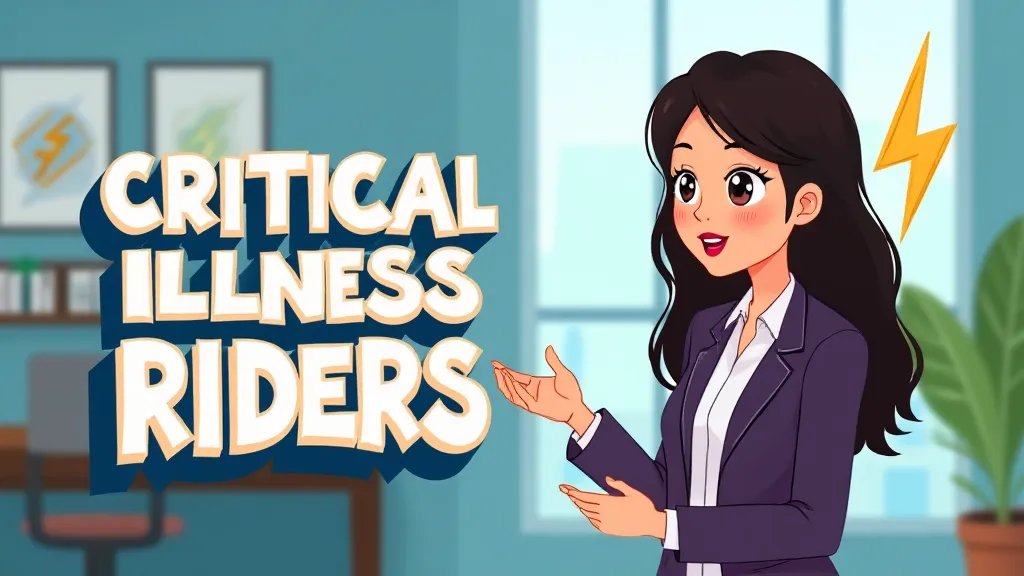
Hi friends! Let’s talk about something super important – protecting your health and finances when life throws curveballs. Remember how COVID-19 made us all rethink our health priorities? Well, today we’re diving into critical illness riders – those powerful add-ons to insurance policies that can save you from financial disaster. We’ll explore how these riders work, why they’re essential in our new normal, and how to choose the right coverage without breaking the bank. Whether you’re new to insurance or reviewing existing policies, you’ll walk away knowing exactly how to seal those dangerous post-pandemic insurance gaps. Let’s get you protected!
Understanding Post-Pandemic Insurance Gaps Exposed by COVID
The pandemic ripped the bandage off healthcare vulnerabilities we’d ignored for decades. Hospitals overflowed, routine treatments got delayed, and millions discovered their insurance had dangerous holes just when they needed protection most. COVID-19 wasn’t just a health crisis – it was a massive stress test for global healthcare systems that revealed critical weaknesses in standard coverage. Post-pandemic insurance gaps aren’t hypothetical anymore; they’re real financial traps that could wipe out years of savings overnight.
Consider this alarming data point: The average COVID-19 hospital stay cost between $42,000-$74,000 according to FAIR Health’s 2023 report. But here’s where traditional policies fail – many patients faced six-figure bills for experimental treatments, long-term rehabilitation, and lost income during recovery. Standard health insurance rarely covers these ancillary costs, creating catastrophic financial exposure. The Economic Times recently highlighted that 67% of Indian families dip into savings or borrow money during health emergencies – a statistic that should keep you awake at night.

What makes these coverage gaps particularly dangerous post-pandemic? First, we’re seeing more “long-haul” conditions that require extended care. Second, medical inflation is soaring at 14-18% annually – nearly double general inflation. Third, mental health claims have skyrocketed by 300% since 2020 according to NIMHANS data. Standard policies simply weren’t designed for these new realities. Critical illness riders specifically address these emerging threats by providing lump-sum payouts upon diagnosis – money you can use however needed.
The most dangerous gap isn’t in your policy documents – it’s in your recovery plan when insurance payouts stop but real expenses continue. Traditional coverage often focuses only on hospital bills while ignoring the financial avalanche that follows serious illness: physiotherapy costs, home modifications, lost income during recovery, and even childcare expenses. This is where riders create a financial airbag. They don’t replace comprehensive health insurance; they reinforce it at precisely the weakest points COVID exposed. Think of them as specialized armor for battles your main policy wasn’t designed to fight.
Critical Illness Riders Explained: Your Financial Safety Net
Let’s demystify these powerful tools. A critical illness rider is an affordable add-on to your existing life or health insurance that pays a lump sum if you’re diagnosed with specific serious conditions. Unlike traditional coverage that reimburses hospital bills, this cash payout arrives upfront upon diagnosis of covered conditions like cancer, heart attack, stroke, or major organ failure. You control how to use the funds – whether covering treatments not included in your main policy, replacing lost income, or even taking a therapeutic vacation.
Why does this structure matter so much? Consider cancer treatment: While your health insurance might cover chemotherapy, it won’t pay for the revolutionary immunotherapy costing ₹15 lakhs per cycle. It won’t cover your mortgage when you can’t work for nine months. It won’t fund that specialized nutrition plan or home nursing care. This is where critical illness coverage becomes your financial lifeline. IRDAI data shows riders typically cover 10-15 major conditions, with comprehensive plans covering up to 64 critical illnesses – creating concentric rings of protection around your finances.
How do claims actually work? Unlike hospitalization claims requiring bills and discharge summaries, critical illness benefits require only confirmed diagnosis from a specialist. Most insurers process payments within 15-30 days after document verification. There’s typically a 90-day survival period (you must survive diagnosis by 3 months) and a 90-day waiting period after policy purchase before coverage activates. The revolutionary aspect is flexibility – that lump sum can bridge gaps no traditional policy covers, from accessing cutting-edge treatments abroad to maintaining your family’s standard of living during recovery.
Consider real-world applications: When Rohan (42) suffered a heart attack, his ₹25 lakh rider payout covered his angioplasty’s non-medical costs, six months of income replacement, cardiac rehabilitation, and even his daughter’s college fees. Without it, his family would have drained their savings or taken debilitating loans. This is the power of riders – they create financial stability when health stability crumbles. Especially post-COVID where recovery periods extend and new complications emerge, this targeted protection has transitioned from “nice-to-have” to “essential” in comprehensive financial planning.
Top 5 Critical Illness Coverage Benefits You Can’t Ignore
Why are financial advisors increasingly recommending these riders as core protection? First and foremost, they provide living expense coverage during recovery periods that can stretch for years. When the World Health Organization reports that 60% of bankruptcies stem from medical costs, having funds specifically allocated for non-medical expenses becomes crucial. Your EMI payments, utility bills, and children’s education fees don’t pause when you’re hospitalized – critical illness riders ensure these essentials remain covered.
Second, they unlock access to experimental treatments often excluded from standard policies. Revolutionary treatments like CAR-T cell therapy for cancer can cost crores but offer life-saving potential. Since riders provide unrestricted cash payouts, you’re not limited by insurance company approval lists. Third, they function as sophisticated income replacement tools. With most policies offering sums assured between ₹10-50 lakhs (and higher for premium plans), you can replace 1-3 years of income without touching investments or emergency funds.
Fourth, riders provide powerful debt protection. Medical crises often trigger a domino effect: lost income leads to missed payments leads to compounding interest and damaged credit. Supplemental health coverage intercepts this cascade before it starts. Finally, the psychological security is invaluable. Knowing you have financial backup reduces stress during treatment – which multiple studies link to better recovery outcomes. When medical crisis strikes, financial panic should be the last thing on your mind – riders ensure it isn’t.
The pandemic amplified all these advantages exponentially. Long COVID sufferers especially benefit since many experience multiple qualifying conditions over time. Some progressive insurers now include pandemic-related complications in coverage. Unlike traditional disability policies requiring total inability to work, riders pay based on diagnosis regardless of work capacity. This makes them uniquely valuable for knowledge workers who might return part-time during recovery but still face massive expenses. For comprehensive protection in our volatile world, these five benefits make riders indispensable.
Smart Health Insurance Add-Ons for Comprehensive Protection
Now that we understand why riders matter, let’s examine how they integrate with existing coverage. Think of your insurance portfolio as a financial immune system – base health insurance is your first-line defense, while critical illness riders act like specialized antibodies targeting specific threats. This layered approach ensures no single point of failure in your protection. Compared to standalone critical illness policies (which remain valuable), riders offer distinct advantages: They’re typically 20-40% cheaper when bundled with life insurance, have simplified underwriting, and synchronize renewal dates.

Cost-effectiveness deserves special attention. For a healthy 35-year-old, adding a ₹25 lakh rider to term insurance might cost just ₹2,500-4,000 annually – less than daily coffee expenses. Yet this creates immediate protection equivalent to 3-4 years of income. The math becomes compelling when you consider that cancer treatments can exceed ₹50 lakhs and heart surgeries ₹25 lakhs at premium hospitals. Insurance policy enhancements like riders deliver disproportionate protection relative to their cost.
Customization options let you tailor coverage precisely. You can choose: Coverage amount (typically 25-100% of base sum assured), number of conditions covered (basic: 10-15, comprehensive: 30+), reinstatement options (restores coverage after claim for different illnesses), and return-of-premium features. Progressive insurers now offer modular riders – add neurological protection if family history indicates risk, or enhanced cancer coverage if geographically relevant. The golden rule: Match rider scope to both statistical risks and personal health narratives rather than taking cookie-cutter solutions.
Understanding the claim process eliminates surprises. Unlike hospitalization claims requiring exhaustive documentation, rider claims need: 1) Completed claim form, 2) Attending physician’s statement confirming diagnosis, 3) Relevant diagnostic reports (biopsy, angiogram, etc.), and 4) Identity/age proof. Reputable insurers have dedicated critical illness claim teams for faster processing. Post-pandemic innovations include video verification and electronic submission – some claims get approved in under 72 hours. This efficiency matters tremendously when facing six-figure treatments requiring immediate payment.
Building Robust Pandemic Insurance Protection for Future Crises
The seismic lesson from COVID-19? Preparedness matters. While we can’t predict the next health crisis, we can engineer financial resilience. Critical illness riders form a crucial pillar in pandemic-proofing your finances because they cover conditions likely to surge during health crises – respiratory failure, multiple organ dysfunction, and sepsis. IRDAI’s recent guidelines now classify pandemic-related complications as critical illnesses when they meet severity thresholds, making riders more relevant than ever.
Selecting future-proof riders requires scrutinizing four key aspects: First, ensure coverage includes novel/viral illnesses (not just standard conditions). Second, prioritize policies with shorter waiting periods – 90 days instead of 180+ days. Third, demand inflation protection – either through automatic sum assured increases or guaranteed purchase options. Fourth, verify multi-claim functionality. Financial protection after COVID requires anticipating sequential health challenges – some insurers allow 2-3 separate claims for different illnesses.
Consider how progressive riders now address pandemic-specific concerns: Many cover home hospitalization (critical when ICUs overflow), provide virtual counseling benefits for mental health (PTSD claims surged 300% post-COVID), and include ambulance services for contagious patients. Some even offer diagnosis assistance through telehealth partnerships. The most comprehensive pandemic insurance protection combines traditional coverage with specialized riders creating overlapping safety nets.
Let’s examine real policy mechanics: HDFC Ergo’s Critical Illness Rider covers 20 conditions including COVID-19 complications requiring ICU admission beyond 72 hours. ICICI Pru’s iProtect Smart covers 64 illnesses with optional return of premium. SBI Life’s Shield offers coverage up to age 85 with reinstatement option. While features vary, the core principle remains: structured protection against catastrophic expenses. Industry data reveals riders typically pay 30-40% higher claims during health crises compared to normal periods – proving their amplified value when systems are stressed.
Maximizing Your Critical Illness Benefits: Action Plan
Knowledge without action is useless. Let’s transform insights into protection. First, conduct a policy audit: Dig out your existing life/health insurance documents. Scan for existing critical illness riders – many people have coverage without realizing it. If absent, note your base sum assured since rider coverage typically caps at 100% of this amount. Calculate your ideal coverage: Multiply monthly expenses by 24 (for two-year coverage), then add anticipated treatment costs minus existing health insurance limits.
Comparison strategy is crucial: Don’t just compare premium costs. Create a rider comparison matrix examining: 1) Number of covered conditions 2) Waiting periods 3) Survival period requirements 4) Exclusions clarity 5) Claim settlement ratio (aim for insurers above 90%) 6) Renewability terms 7) Reinstatement options. Online aggregators like Policybazaar provide starting points, but verify details directly with insurers. Medical insurance riders require more specialized evaluation than base policies – consider consulting an independent advisor.
Integration with existing coverage prevents overlaps and gaps. If you already have a standalone critical illness policy, coordinate benefits rather than duplicate. Standard integration formula: Base health insurance (covers hospitalization) + Critical illness rider (covers income loss/experimental treatments) + Accident disability rider (covers injury-related income loss) = Comprehensive protection. Always disclose existing conditions honestly – non-disclosure remains the top claim rejection reason at 45% according to IRDAI reports.
Finally, institute periodic reviews. Re-evaluate coverage during life milestones (marriage, parenthood, home purchase), when income increases by 25%+, or every three years. Update beneficiaries, understand policy loans against riders if emergencies strike, and track new rider innovations. Post-pandemic insurance gaps evolve constantly – your protection should too. Set calendar reminders for policy review dates just like medical check-ups. Proactive management ensures your financial immunity strengthens as new threats emerge.
FAQs: financial protection after COVID Qs
We’ve navigated the complex world of critical illness riders together – from understanding pandemic-exposed gaps to selecting smart coverage. Remember: These riders aren’t luxury additions; they’re essential financial shock absorbers in our volatile world. COVID taught us that health crises arrive unannounced and traditional coverage often crumbles when needed most. By adding this strategic layer of protection, you’re not just insuring against diseases – you’re safeguarding careers, educations, homes, and futures.
Your action step today? Pull out your insurance documents. Do you see “critical illness coverage” listed? If not, contact your provider about rider options. If covered, verify the sum assured still matches your current needs. Share this knowledge with three people you care about – true protection means our communities are resilient too. For ongoing guidance, subscribe to our newsletter where we decode insurance complexities into actionable wisdom. Stay protected, stay empowered!




